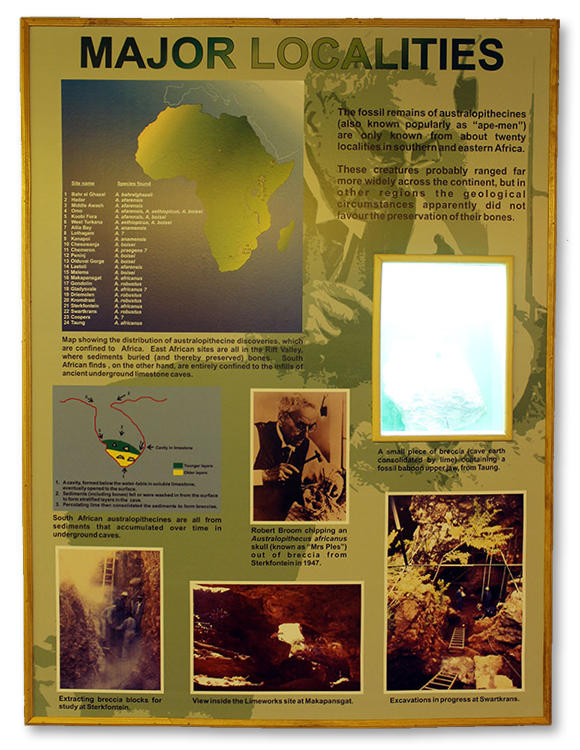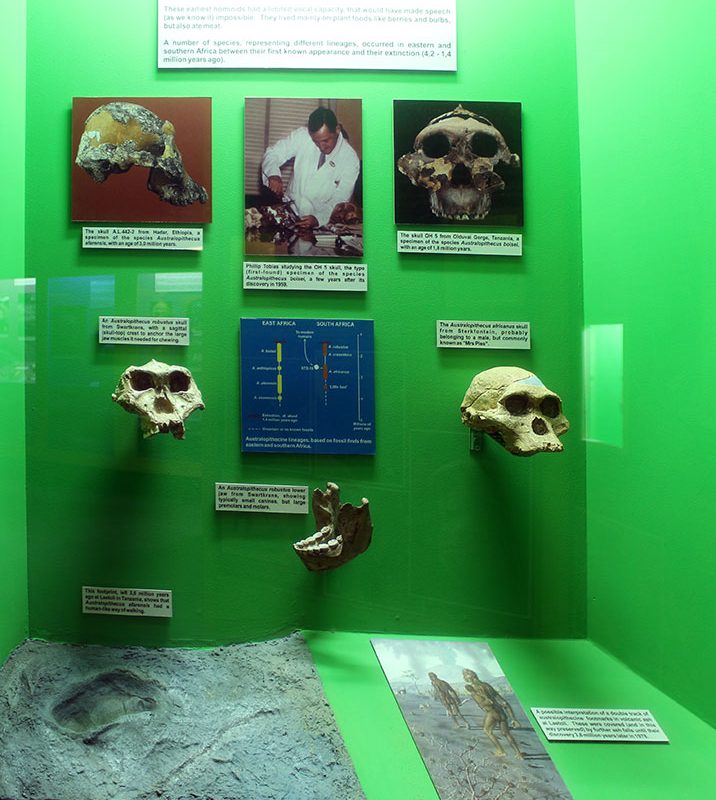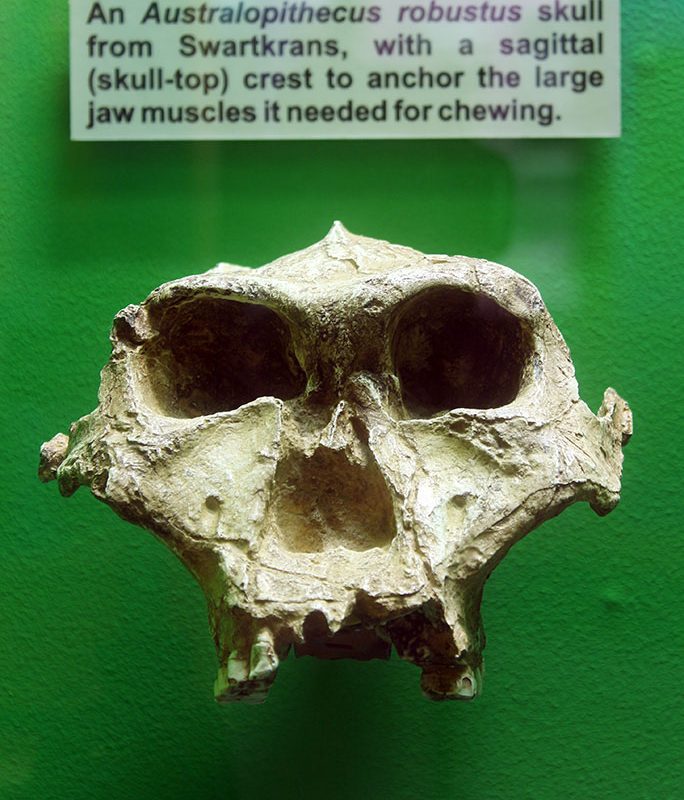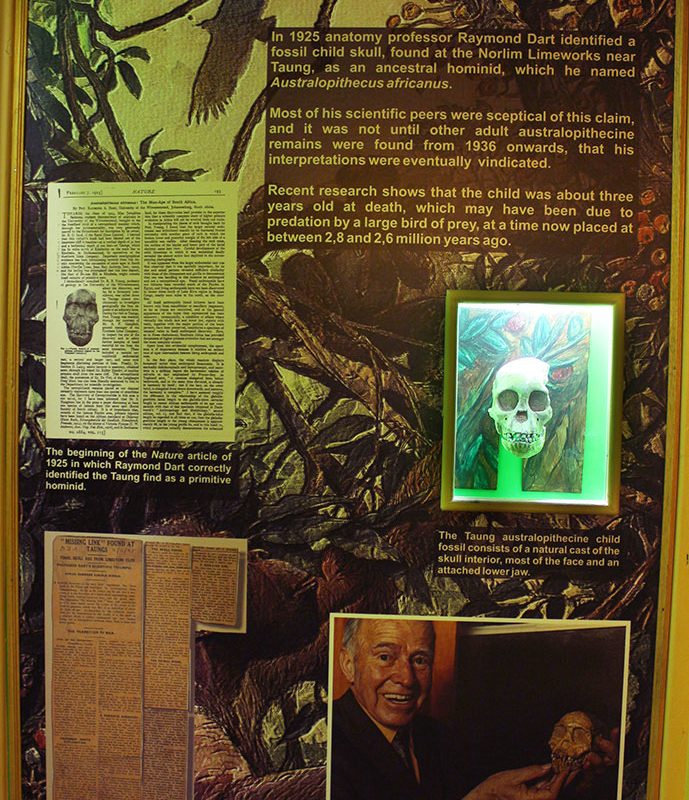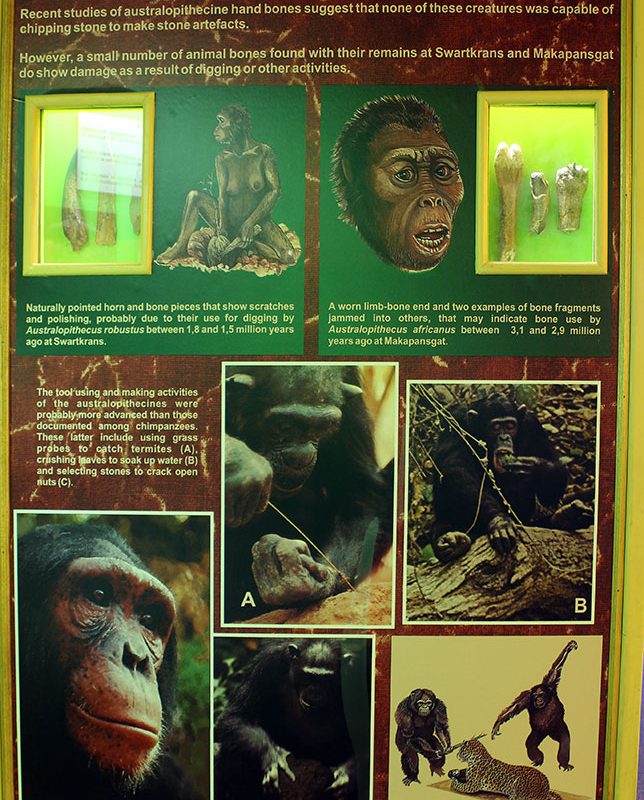Humankind’s African antecedents
- Humankind’s African antecedents
- https://museumsnc.co.za/new_site/wp-content/uploads/2021/04/humankind-thumb.jpg
- ALL CATEGORIES
- https://museumsnc.co.za/new_site/wp-content/uploads/2021/04/02-Humankind-Voiceover.mp3
The earliest humans, hominins belonging to the genus Homo, arose in Africa about 2.5 million years ago.
They would have evolved from creatures of earlier times known as Australopithecus africanus, although the exact lines of descent are much debated, and on-going fossil discoveries and progress towards dating the appearance of different forms, show that the lineages and relationships between them were complex.
The first known fossil of Australopithecus africanus was found at Taung, near Kimberley, in 1925, and was claimed by Professor Raymond Dart to be ancestral to humans. The scientific world remained skeptical, and it was not until other australopithecine fossils were found from 1936 onwards, that Dart’s views became widely accepted.
The australopithecines, with various species spanning the period of about 4.2 to 1.4 million years ago, were small-brained, long-armed, short-legged and upright walking creatures. They had a limited vocal capacity that would have made speech impossible. Recent studies show that they were mainly forest dwellers who lived largely on plant foods, although they also ate meat. There is no good evidence that they were capable of making stone artefacts, but they would have selected natural materials for use as crude tools.
Although australopithecines probably ranged widely across Africa, their fossil remains are preserved at only a small number of sites in southern and eastern Africa.
